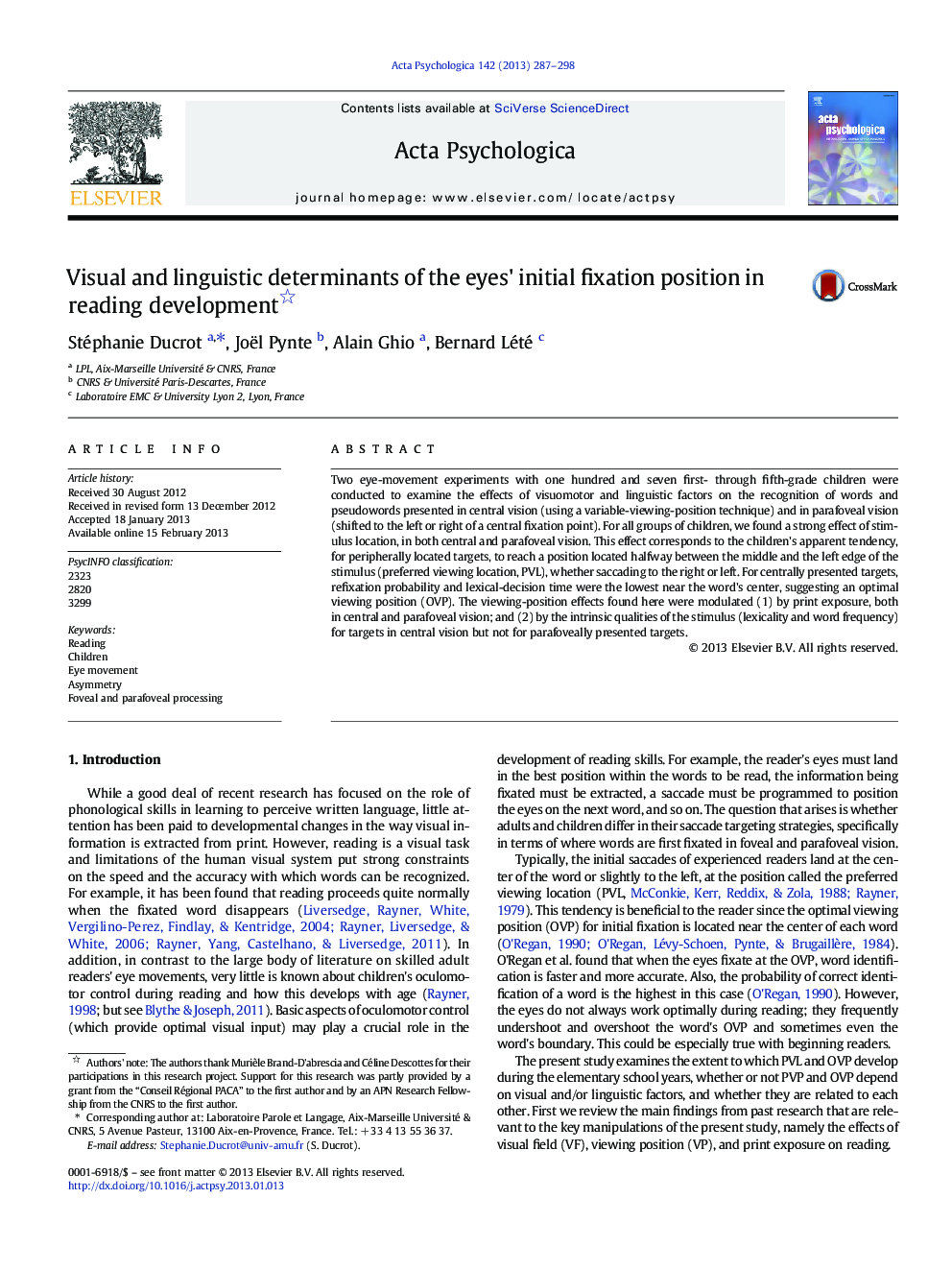| Article ID | Journal | Published Year | Pages | File Type |
|---|---|---|---|---|
| 919811 | Acta Psychologica | 2013 | 12 Pages |
Two eye-movement experiments with one hundred and seven first- through fifth-grade children were conducted to examine the effects of visuomotor and linguistic factors on the recognition of words and pseudowords presented in central vision (using a variable-viewing-position technique) and in parafoveal vision (shifted to the left or right of a central fixation point). For all groups of children, we found a strong effect of stimulus location, in both central and parafoveal vision. This effect corresponds to the children's apparent tendency, for peripherally located targets, to reach a position located halfway between the middle and the left edge of the stimulus (preferred viewing location, PVL), whether saccading to the right or left. For centrally presented targets, refixation probability and lexical-decision time were the lowest near the word's center, suggesting an optimal viewing position (OVP). The viewing-position effects found here were modulated (1) by print exposure, both in central and parafoveal vision; and (2) by the intrinsic qualities of the stimulus (lexicality and word frequency) for targets in central vision but not for parafoveally presented targets.
► What determines the eyes' initial fixation position in reading development? ► We found a strong effect of stimulus location in both central and parafoveal vision. ► The VP effects was influenced by target properties, in central vision only ► The VP effects were modulated by school grade, both in central and parafoveal vision. ► There was no evidence for the OVP being “the basis” of the PVL, and vice versa
